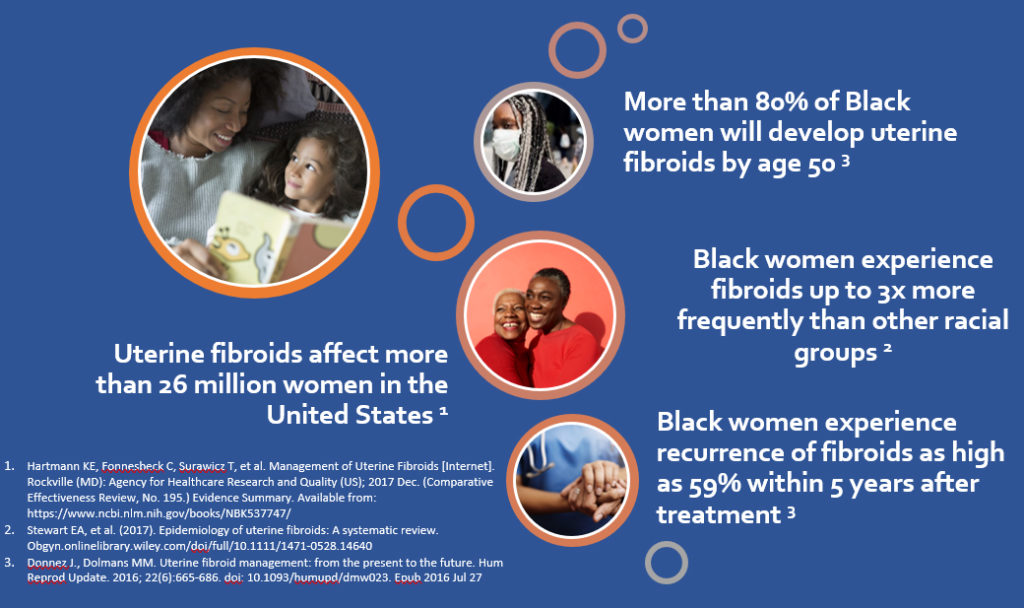During this quarter, as we celebrate Black History Month and honor International Women’s Day, it is important to increase awareness of health conditions that disproportionately impact people in these communities, and offer guidance for how, as physicians, we can better address them.
In the past few years, new legislation that aims to boost funding behind women’s health initiatives in the United States has been introduced with more frequency.
In 2019, a bill that sought to reduce the number of Black women who die due to pregnancy or childbirth-related causes was presented to Congress.
An additional bill just introduced to Congress, the Stephanie Tubbs Jones Uterine Fibroid Research and Education Act of 2021, aims to support awareness and education for uterine fibroids and to increase critical research funding that takes into consideration the disproportionate incidence in women of color. This bill has received bipartisan support, chiefly from Rep. Yvette Clarke (D-NY), Sen. Cory Booker (D-NJ), Congresswoman Robin L. Kelly (IL-02), Congresswoman Bonnie Watson Coleman (NJ-12), and Congressman David Scott (GA-13), and was introduced to the House of Representatives for a vote on March 22nd. Should the bill advance to the Senate and pass, it will mark a significant step toward improving care for a condition that affects approximately 26 million women in the US.1
Although women of all races and ethnicities can develop fibroids, Black women experience uterine fibroids at much higher rates. Some studies cite that fibroids occur in Black females up to three times more frequently than other races and they develop at earlier ages.2 Up to 80% of black women have fibroids develop by age 50.
The definitive cause of fibroids is unknown.
As of 2016, a study found that Black women may also experience higher rates of recurrence of uterine fibroids following surgical treatment, and that recurrence can be as high as 59% within 5 years.3 Taking these disparities into consideration, it is vital that medical teams and providers present their patients with all available treatment options. Each patient presents her own symptoms and goals, and each case demands its own appropriate treatment plan.
There are theories for why the prevalence of uterine fibroids is higher among Black women, including higher rates of obesity and higher rates of vitamin D deficiency. There are also significant inequities in access to healthcare among minorities that may affect diagnosis and treatment.4 Research is needed to confirm what may increase risk of fibroid development among these populations. It is also important that doctors are familiar with all the treatment options and actively present these options to women with symptomatic fibroids.
- Hartmann KE, Fonnesbeck C, Surawicz T, et al. Management of Uterine Fibroids [Internet]. Rockville (MD): Agency for Healthcare Research and Quality (US); 2017 Dec. (Comparative Effectiveness Review, No. 195.) Evidence Summary. Available from: https://www.ncbi.nlm.nih.gov/books/ NBK537747/
- Stewart EA, et al. (2017). Epidemiology of uterine fibroids: A systematic review. Obgyn.onlinelibrary.wiley.com/doi/full/10.1111/1471- 0528.14640
- Donnez J., Dolmans MM. Uterine fibroid management: from the present to the future. Hum Reprod Update. 2016; 22(6):665-686. doi: 10.1093/humupd/dmw023. Epub 2016 Jul 27 4. Al-Hendy A, et al. (2017). Uterine fibroids: Burden and unmet medical need. Ncbi.nlm.nih.gov/pmc/articles/PMC6193285/
